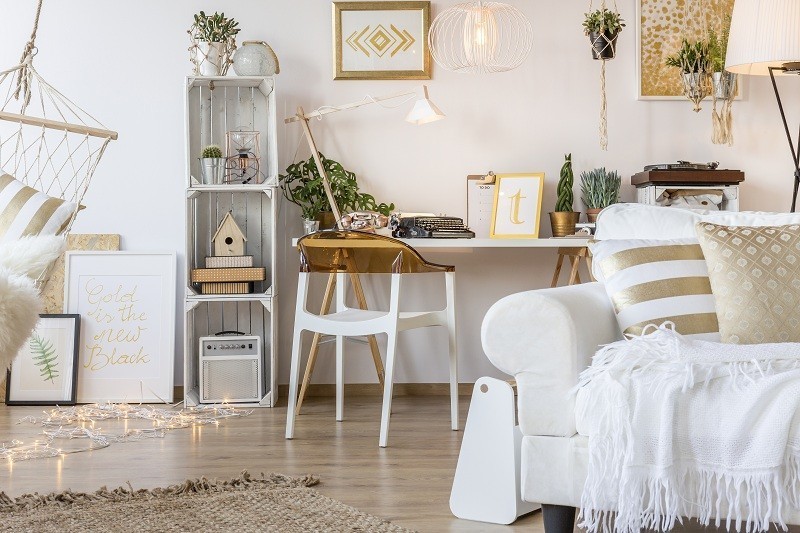Flex Bedroom
What to Ask Before Renting a Flex Apartment in Financial District
By: Jennifer Villalba May 31, 2020
With soaring property prices and shrinking spaces, many people are looking for flex apartments in NYC. Flex apartments are the right fit for the families, roommates, and couples who want another room in the property but can't afford a larger space. Before you search for where to find the flex apartment, you need to clear some doubts by asking some questions.
For a quick refresher, a flex apartment is generally a studio, one or two-bedroom unit that lets you create a second bedroom by dividing the living space into two parts with a pressured wall. Simply put, it is a large space that can be divided into two rooms by placing the wall in between.

This way, you can add an extra room to your living space. You can convert that room into the workplace, entertainment area, gym, and simple an extra bedroom.
Is it easy to rent a flex apartment?
Unfortunately, the answer is NO.
Thanks to the new building codes and the real estate companies who are looking to put such living spaces to end.
As we have told you that many people still prefer flex apartment who can't afford a larger apartment.
Here are some important questions to know before renting a flex apartment in New York City.
Is Flex Apartment Legal?
This is one of the key questions to ask from your potential landlord or co-op boards. Many living spaces are advertised as "flex" apartments. However, not all landlords can allow you to add a wall.
If you want to add a flexible wall in the room, you have to seek permission from the New York City Department of Buildings. Simply put, you require hiring a licensed engineer or architect who can install the wall and then have a licensed engineer or architect inspected and approved the work as mentioned by the DOB guidelines.
Moreover, the creation of a new room should also meet the definition of a bedroom in NYC. It means that the room should be at least 80 square feet and have at one window. After the transformation, you legally should have a living room that should be at least 150 square feet. Last but not least—your new room would be considered illegal if it interferes with your ventilation or sprinkler system.
Which Wall Type is Allowed?
Technically, the wall is required to divide the room into two or more portions. Which type of wall is acceptable? Have you ever thought about it?

A pressurized wall is no longer in use. Instead, more apartments require a sliding wall or door or a freestanding bookshelf unit as the wall. Most of these "wall options" are built by the companies that used to manufacture the pressurized walls. This leads to a similar result with a significant difference to meet the DOB guidelines.
Those walls might not fit the legal definition of the wall as they don't meet the ceilings or are not permanently attached. Even they can install as furniture in the form of bookshelves.
In other words, you are using the "wall" or object that is legally NOT the wall.
Do You Need to Seek Permission from Your Landlord?
Not all landlords might allow you to alter their rental property. If you do so, the wall or any modifications can be ripped off, that's too without paying any compensation.
Therefore, make sure to get approval from your landlord before making any changes. If you live in a condo or co-op, get approval from your building's board. Also, it is important to know that many sliding walls or furniture installers will ask for approval from the landlords or building management authority before doing their work in your space.
Am I Supposed to Move the Wall When I Move?
Well, this question is not easy to answer. While some landlords are okay with that, some might want their rented property in a condition as it was before you move in. If you are somehow not able to remove a partial wall, sliding wall, or freestanding bookshelf, you could be held liable for that and eventually lose your security deposit. It is better if you discuss that with your owner or co-op body.
How Much Do I Need to Pay?
The prices varied based on the wall or divider chosen by you. The entry-level prices of such modifications start at just over $1,000. But the rule is simple—the more you pay, the better you get.

One more thing—you can save more on a legally flex apartment. For example, you spend $ 3,000 to flex a $2,000 one bedroom-apartment into a two-bedroom apartment in a locality where two-bedrooms start at $ 2,500, over five years, your initial $3000 investment could lead to a savings of 27,000 USD or more.
Do You Need to Flex the Apartment?
Well, that question depends whether you are an owner or a renter. In case of latter, figure out if converting cost, which runs between $700 to $1500,can be recovered. And if you are the owner, consider whether or not adding a bedroom will add value.
Does Your Building Allow Flexing?
That's the first thing to ask before you choose flex walls. Make sure you check with your leasing company, the management company and your building and verify that they allow flexing. In the worst scenario, if the company notices flex wall, you will have to take that down which would certainly cost money and most importantly you can face eviction.
Who will Install Flex wall?
Approval granted, what's next? Who will install the wall and where to install it? Will you be hiring a contractor? If yes, does that contractor is licensed for his/her work?
So you must have understood what to know about when renting a flex apartment. What do you think? Let us know by commenting below!
If you are looking for Flex Apartment, Contact Us!
Source: https://www.nyrentownsell.com/blog/what-to-ask-before-renting-a-flex-apartment-in-financial-district/

0 komentar:
Posting Komentar